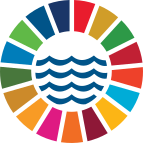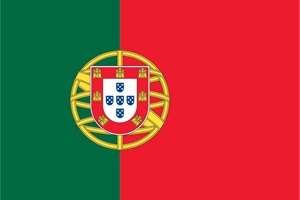Monitoring and mitigating seabird bycatch in the Mediterranean
Ligue pour la protection des oiseaux (NGO) ; BirdLife Malta (NGO) ; Sociedad Española de Ornithologic (NGO) ; Sociedade Portuguesa para o Estudo das Aves (NGO) ; Hellenic Ornithological Society (NGO)
(
Non-governmental organization (NGO)
)
#OceanAction58054
Description
Seabird species are exposed to several risk factors in their terrestrial and marine environments. Accidental capture in fishing operations (bycatch) can occur either with commercial fisheries or recreational fisheries and is identified as the leading at-sea threat to species populations globally. Published estimates of seabird bycatch in longline fisheries globally range from 160 000 to 320 000 per year. In Europe, gillnet and longline fisheries are responsible for the highest bycatch levels estimated, with 95 000 and 80 000 seabirds killed each year respectively.
Petrels and shearwaters are a highly at-risk group of bird species, with 55% of their 95 extant species listed by the International Union for Conservation of Nature (IUCN) as threatened of extinction. Theses species range widely during and outside of their breeding season, and can traverse ocean basins in between breeding periods, exposing them to risks both within national waters and on the high seas.
The Yelkouan (Puffinus yelkouan) and Balearic shearwaters (Puffinus mauretanicus) are
respectively classified as Vulnerable and Critically Endangered by the IUCN Red List of
Threatened Species. The project LIFE PanPuffinus! (2020-2025) aims to improve the conservation status of these two species by tackling predation by invasive species and fisheries bycatch, which are the main threats that these species face both on land and at sea, during and outside breeding season.
With respect to the second threat, the project planned to tackle fisheries bycatch of Yelkouan and Balearic shearwaters through two a combination of actions:
- Through a multi-approach methodology, collecting information on spatio-temporal characteristics of fisheries, seabird distribution and bycatch rates to produce bycatch risk maps
- Collaborating with professional fishers to identify and trial different bycatch mitigation measures to deter birds from fishing boats, reduce attraction or impede access of seabirds to a potential food
- Selecting and adapting the most suitable bycatch mitigation measures to local realities
- Compiling knowledge and experience of partners working with seabird bycatch in the Mediterranean
- Increasing capacity of relevant authorities through awareness-raising activities and training to respond to country-specific threats to these species.
As we are entering in the final year of the projet, the main results from these actions have been obtained and can be shared, in particular, which fisheries (gear, location, season) are causing seabird bycatch, and which mitigation measures are most effective and should be implemented across the region. LIFE PanPuffinus’s results aim are being incorporated in bycatch monitoring and reduction policies partner countries in the Mediterranean and beyond. Conservationist and fishers collaboration initiated through this project will also be continued through new initiatives and national and transnational level.
General Fisheries Commission for the Mediterranean (GFCM)
Natural environnement and Climate Change Agency (NECCA, Greece)
Department of Fisheries and Aquaculture from Malta (DFA Malta)
Direcção Geral de Recursos Naturais, Segurança e Serviços Marítimos (DGRM, Portugal)
French biodiversity agency (OFB, France)
Provence Alpes Côte d’Azur Regional fisheries committee (CRPMEM PACA, France)
Levant Producers organisation (OP du Levant, France)
SDGS & Targets
Goal 14
Conserve and sustainably use the oceans, seas and marine resources for sustainable development
14.1
By 2025, prevent and significantly reduce marine pollution of all kinds, in particular from land-based activities, including marine debris and nutrient pollution
14.1.1
(a) Index of coastal eutrophication; and (b) plastic debris density
14.2
By 2020, sustainably manage and protect marine and coastal ecosystems to avoid significant adverse impacts, including by strengthening their resilience, and take action for their restoration in order to achieve healthy and productive oceans
14.2.1
Number of countries using ecosystem-based approaches to managing marine areas
14.3
Minimize and address the impacts of ocean acidification, including through enhanced scientific cooperation at all levels
14.3.1
14.4
By 2020, effectively regulate harvesting and end overfishing, illegal, unreported and unregulated fishing and destructive fishing practices and implement science-based management plans, in order to restore fish stocks in the shortest time feasible, at least to levels that can produce maximum sustainable yield as determined by their biological characteristics
14.4.1
14.5
By 2020, conserve at least 10 per cent of coastal and marine areas, consistent with national and international law and based on the best available scientific information
14.5.1
14.6
By 2020, prohibit certain forms of fisheries subsidies which contribute to overcapacity and overfishing, eliminate subsidies that contribute to illegal, unreported and unregulated fishing and refrain from introducing new such subsidies, recognizing that appropriate and effective special and differential treatment for developing and least developed countries should be an integral part of the World Trade Organization fisheries subsidies negotiation
14.6.1
Degree of implementation of international instruments aiming to combat illegal, unreported and unregulated fishing
14.7
By 2030, increase the economic benefits to Small Island developing States and least developed countries from the sustainable use of marine resources, including through sustainable management of fisheries, aquaculture and tourism
14.7.1
Sustainable fisheries as a proportion of GDP in small island developing States, least developed countries and all countries
14.a
Increase scientific knowledge, develop research capacity and transfer marine technology, taking into account the Intergovernmental Oceanographic Commission Criteria and Guidelines on the Transfer of Marine Technology, in order to improve ocean health and to enhance the contribution of marine biodiversity to the development of developing countries, in particular small island developing States and least developed countries
14.a.1
14.b
Provide access for small-scale artisanal fishers to marine resources and markets
14.b.1
Degree of application of a legal/regulatory/policy/institutional framework which recognizes and protects access rights for small‐scale fisheries
14.c
Enhance the conservation and sustainable use of oceans and their resources by implementing international law as reflected in United Nations Convention on the Law of the Sea, which provides the legal framework for the conservation and sustainable use of oceans and their resources, as recalled in paragraph 158 of "The future we want"
14.c.1
Number of countries making progress in ratifying, accepting and implementing through legal, policy and institutional frameworks, ocean-related instruments that implement international law, as reflected in the United Nations Convention on the Law of the Sea, for the conservation and sustainable use of the oceans and their resources
SDG 14 targets covered
| Name | Description |
|---|---|
| 14.2 | By 2020, sustainably manage and protect marine and coastal ecosystems to avoid significant adverse impacts, including by strengthening their resilience, and take action for their restoration in order to achieve healthy and productive oceans |
| 14.4 | By 2020, effectively regulate harvesting and end overfishing, illegal, unreported and unregulated fishing and destructive fishing practices and implement science-based management plans, in order to restore fish stocks in the shortest time feasible, at least to levels that can produce maximum sustainable yield as determined by their biological characteristics |
| 14.a | Increase scientific knowledge, develop research capacity and transfer marine technology, taking into account the Intergovernmental Oceanographic Commission Criteria and Guidelines on the Transfer of Marine Technology, in order to improve ocean health and to enhance the contribution of marine biodiversity to the development of developing countries, in particular small island developing States and least developed countries |
Deliverables & Timeline
Resources mobilized
Partnership Progress

Feedback
Action Network

Timeline
Entity
SDGs
Other beneficiaries
Ocean Basins
Communities of Ocean Action
More information
Countries





Headquarters
Contact Information
Louis, Advocay and policy officer

